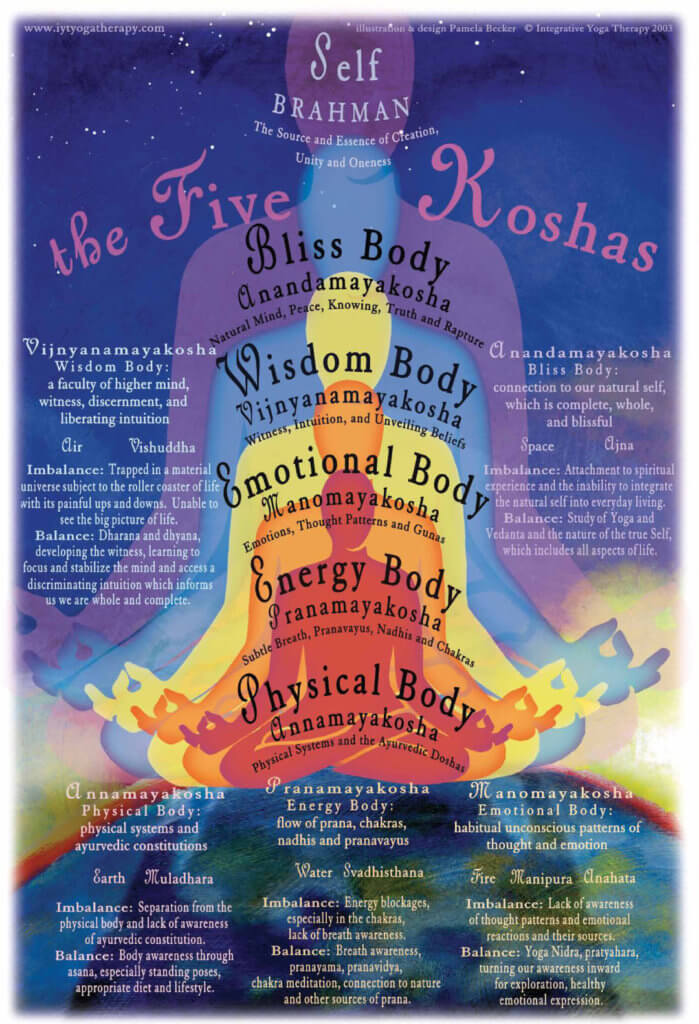For the last three weeks, we’ve been talking mindfulness. We’ve discussed the basics, an introduction to meditation, and a strategy to dig in to the practice.
This week, we ask some deep questions. What is the state of mindfulness? What actually changes when we’re “being mindful” versus being our normal, daily selves? And why does mindfulness make us feel better?
Just like anything, mindfulness breaks down into a certain array of mechanics. There’s a science to it, from a Western and an Eastern perspective. This post will focus more on the Eastern mindset, though it should be acknowledged that there’s plenty of Western-style fact behind mindfulness and how it works.
If we pull the curtain back on mindfulness, we see various concepts at play, working together as an intelligent system. And one of the critical pieces of equipment, so to speak, is the mind-body connection.
The “mind-body connection” is another one of those phrases that we hear from time to time, especially in spaces like yoga studios. We’ll look at it more closely here; particularly, how it relates to mindfulness.
Defining the Mind-Body Connection
In order to understand this concept more thoroughly, we’ll dip into just a little yoga philosophy.
Yogic philosophy divides the human experience into layers and calls them the koshas. Kosha means “sheath,” or loosely “body,” and there are five of them. Each of these five bodies contains a certain aspect of the human experience.
- Physical Body: The first layer is essentially our physical body — the densest, most obvious element of our human experience. When you look down and touch your arms, your legs, you are having an experience within your physical body… Semi-straightforward.
- Energy/Breath Body: The second layer is the energy body, often called the prana body, and it consists of our energy and breath. It’s that invisible yet undeniable part of our experience. We can’t see the breath, but it’s certainly there. When we have a lot of energy, we can’t see the energy itself but we know it’s there.
- Mental Body: Our third layer is the mental body, and this includes all thought and emotion. It’s not a physical part of us per se, but it has an existence that can be felt as its own body.
- Wisdom Body: Things continue to get more subtle as we travel into the wisdom body. This is the layer that comprises of what people often refer to as the “higher self.” It’s also home to the intuition, Observer, and our sense of morals.
- Bliss Body: The final layer is our bliss body, our most ethereal sheath. In the bliss body we arrive at total peace and stillness. It’s the spiritual layer, and essentially the closest that we get to the “something greater” out there, whatever that looks like to you. If you’ve ever had a deep, transcendant meditative experience, then you’ve dabbled in the bliss body.
This is a seriously condensed version of the koshic model. There’s so much more wisdom and detail to the koshas that you can check out. Plus this picture helps to visualize the concept…

Image from www.iytyogatherapy.com
Understanding the basics of the koshas establishes some foundational pieces of yogic philosophy, affording us a more contextual view of the mind-body connection.
So we can now begin to define the mind-body connection. The mind-body connection is the seamless union of the physical, energetic, and mental bodies. Within the mind-body connection, all functions of our body, our energy, and our mentality are in balance and cooperating.
It’s perhaps most important to understand that when we have mind-body connection, our awareness has expanded. Let’s look at a few examples to digest this.
Example of what is not the mind-body connection:
If you don’t have mind-body connection, then you are stuck in one body. You’re likely stuck in the mental body or stuck in the physical body. Hypothetically you could also be stuck in both.
For example, have you ever tried to do anything mindfully or with presence when you’re sick? It’s nearly impossible to meditate or practice yoga. Having a demanding or deep conversation with somebody else feels like torture. When you’re sick, all of your awareness is captured in the physical body. Therefore mind-body connection is very unlikely.
Another example is when you’re in emotional turmoil. When something terrible happens to you, like a break up… What happens to your energy levels (your energy body)? Your energy level tanks. Suddenly it’s impossible to get up and get ready, or clean your home, or talk to anyone else. Depression or some kind of extreme mood sinks in, and your awareness becomes locked in your emotional body.
In both cases, your awareness is limited.
Example of a mind-body connection:
When you are in this state, one circumstance is guaranteed: your awareness has expanded to include body, energy, and mind. You have the ability to be equally aware of how your body feels, the status of your energy/breath, without the interruption of the mind.
A good way to really get into this definition is considering the concept of The Observer. The Observer is the part of you that observes (obviously). It is pure awareness, which means that it’s constant. It can’t change with the weather of your emotions, or bodily circumstance.
If you’re in a state of observing, you’re within the mind-body connection — and vice versa. They come together.
Mind-Body in Today’s World
The way that we have been conditioned to live in this modern world is typically one of reaction. When things are going great, it’s really easy to tap into that mind-body connection, right?
Imagine. You’re having the best day, and you decide to go to the park. You open up a blanket, lie back, and stare up at the clouds. You take one deep breath after another. You can feel your whole body stretched out. All the colors around you look vivid and beautiful. You can feel the breeze, the sun. Life is so good.
Then you get a phone call. It’s your boss, and they’re telling you that you need to come into work as soon as possible, even though it’s the weekend, even though it’s last minute.
You get mad, and suddenly your vision narrows, literally. You jump into your mind, into your emotions, into the world of spontaneous reaction. It is exactly at this moment that we sever the mind-body connection.
The truth is that we live in this state of disrupted mind-body connection nearly all the time. Once it’s disrupted, which typically happens right away when we wake up — thanks to our smart phones or the television or challenging relationships, the list goes on — we are lucky if we get back into it throughout the day.
As soon as we fall into the trap of reaction, it’s like putting on a pair of glasses with red lenses. Everything we see is this certain shade of red, and then we get so used to it over time that “red” becomes the new normal. We can forget for long periods of time about all the colors we saw that day at the park… And that’s just sad.
Tapping into the mind-body connection is essentially your way of taking off the red glasses.
Mind-Body Connection and Mindfulness
So why are we going on about the mind-body connection? What does it have to do with mindfulness?
Well it’s really quite simple… The mind-body connection IS mindfulness. And that’s all there is to it.
So far in this blog post series, we’ve realized that the concept of mindfulness has really been watered down. It has become a buzzword, and therefore kind of ambiguous. So we’ve given a couple paths to mindfulness, ranging from the simple to the more intricate.
If we understand mindfulness as the mind-body connection then we can start to see more clearly the huge benefits of cultivating this practice.
How to Cultivate the Mind-Body Connection
If you’re practicing mindfulness, then you get the mind-body connection as a result. So we can also focus on mind-body connection, therefore, to create mindfulness.
At any moment, you can create mind-body connection. It may even be easier to cultivate than just “mindfulness” — because it provides a more clear sense of direction.
To strengthen your mind-body connection, you can work your way through the first three koshas, as mentioned earlier in this article. (The koshas are an awesome map toward inner peace, actually… They’re like a spiritual version of Google Maps 😃 )
- Take a moment to pause. Notice the world around you and tap into all five of your senses. What colors and shapes are you seeing around you? What are you smelling? What sounds are you hearing, near and far? What part of your environment is touching you right now? What taste do you have in your mouth? This would be an exercise in your Physical Body.
- Take a moment now to feel your body. Try to feel your body as a whole versus just dwelling in your head (as we normally do). You can scan your body for sensation.
- As soon as you start tapping into bodily sensation, you’ve entered the Energy Body. Continue following the sensations. Notice how they move, and what they feel like: do you feel a tingling? A pulsing? A feeling like rushing water? Perhaps there are pain or pleasure sensations? You can also shift your awareness to the sensation of your breathing. Notice (without controlling) the breath and its quality. Notice if it’s long, short, deep, or shallow.
- Keeping your awareness lightly on the body, on sensations, and on breath: What are you feeling? What thoughts are passing through your mental space? This is an exercise in the Mental Body, and it’s challenging. It takes practice. Why? Because the mind and emotions are the most likely to carry us away from mindfulness and into total distraction.
The Secret to Mindfulness: The Body is Your Anchor
By working through this exercise, we hone in on one SUPER important point: The body is our anchor.
We are here on a physical plane. Without getting lost in the meta: there is a physical world around us that we perceive as matter through our sensory faculties. Literally and figuratively, what is physical is grounding to us.
So here’s the secret then: If you stay connected to your body, or to your breath, your mind and emotions will stay grounded. You cannot run away with your thoughts or emotions if you are fully aware of your body. It’s kinda like magic.
Sounds simple, but it’s in fact rather challenging. The mind is crazy powerful. But you know what’s more powerful? YOU. Your Observer Self. Mindfulness. Awareness.
Strengthen that muscle, and the rest is downhill.

Devon Barrow is a yoga teacher for Ohana Yoga + Barre, our amazing social media manager, and a talented teacher for the YTT program. Yoga has been a part of Devon’s life since she was nine years old and continues to be her agent of healing and health. You’ll find both creativity of the physical body and the power of mindfulness in her classes.